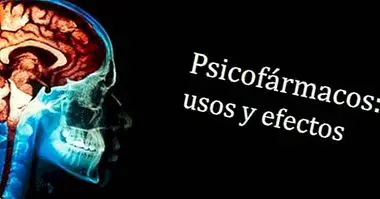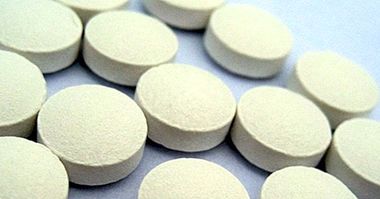Buspirone: description, uses and side effects
In recent years, the use of azapirones has become popular in the treatment of generalized anxiety disorder and as adjuvant drugs in problems such as depression or social phobia. In this article we will analyze therapeutic uses, side effects and contraindications of buspirone , the best known of these anxiolytics.
- Related article: "Types of psychotropic drugs: uses and side effects"
What is buspirone?
Buspirone is a drug with anxiolytic effects that in recent years has begun to be used to treat a wide variety of psychological disorders related to emotional aspects. It is also frequently combined with other medications to enhance its therapeutic action, particularly in the case of depression.
This psychopharmaceutical is part of the group of azapirones , to which belong other medicines that contain the ending "-pirone" in its nomenclature, such as gepirone, ipsapirone or tandospirone, which is used to maximize the effectiveness of antipsychotics. In any case, buspirone is the most used and studied azapirone.
- Maybe you're interested: "Types of anxiolytics: the drugs that fight anxiety"
Pharmacology and mechanism of action
The mechanism of action of buspirone depends on its high affinity with the 5-HT1A serotonergic receptors, as a result of which it exerts an antagonistic effect in this neurotransmitter. In turn, this allows a increase in dopamine and norepinephrine levels . However, its activity is complex and depends on the dose administered.
Maximum pharmacological potency occurs between 60 and 90 minutes after taking the medication. The effects decrease considerably after about 3 hours, although there are studies that indicate that the metabolization is slower, being able to take more than two weeks to completely eliminate buspirone from the organism.
Unlike other psychotropic drugs that are used for the management of anxiety, such as benzodiazepines and barbiturates, Buspirone has a low potential for addiction and dependence and it interferes to a lesser extent in the lives of the people who consume it. It is for these reasons that the popularity of this medication is increasing progressively.
- Related article: "Dopamine: 7 essential functions of this neurotransmitter"
What is it for?
Buspirone was designed and used primarily to treat symptoms related to anxiety. However, recent research suggests that its effects on neuronal transmission may also be beneficial in psychological problems of another type.
1. Generalized anxiety disorder
The main indication of buspirone is the treatment of generalized anxiety disorder, which is characterized by excessive and uncontrollable worry and tends to cause physical symptoms, such as muscle tension, gastrointestinal difficulties and fatigue. In these cases, pharmacological therapy can take almost a month to take effect.
2. Major depression
Currently, the possibility of using buspirone as medication is being studied adjuvant to selective inhibitors of serotonin reuptake (SSRI) in the treatment of depression, especially to counteract problems in the sexual response, very common side effects of these drugs.
Also, other studies suggest that the long-term administration of buspirone may be effective in itself in relieving the symptoms of this disorder. The results are promising, although more research is required to confirm the effectiveness of these applications.
- Related article: "Major depression: symptoms, causes and treatment"
3. Attention deficit with hyperactivity
Another perspective for the use of buspirone is Attention Deficit Hyperactivity Disorder, better known by its abbreviation "ADHD". This alteration is related to the neurotransmission of dopamine , which could explain the good preliminary results that are being obtained in this field.
4. Sexual dysfunctions
In addition to being useful for managing the problems of excitatory and orgasmic dysfunction associated with the use of antidepressant drugs, the research suggests that buspirone could be effective in cases of hypoactive sexual desire, and not necessarily only in those with a pharmacological origin.
5. Agitation and aggressiveness
In the scientific literature we can find references to the use of buspirone in the management of alterations related to psychophysiological agitation, irritability and aggression, particularly in children and the elderly with dementia .
6. Social anxiety disorder
Some studies suggest that buspirone may also be useful in treating social phobia. However, as with depression, in this case, the drugs of choice for this disorder would be administered as a coadjuvant drug to selective serotonin reuptake inhibitors or SSRIs.
Side effects and contraindications
Among the most common side effects of buspirone they emphasize drowsiness, dizziness sensations, headaches , fatigue, nausea, abdominal pain, tachycardia, tremors, insomnia, confusion, irritability and paresthesias (abnormal sensory perceptions such as numbness, tingling or burning).
The symptoms of the previous paragraph often disappear after a few days of starting the consumption. It is advisable to consult a doctor when side effects are severe, remain after several weeks of treatment or include Notable cardiovascular problems , difficulties of motor coordination or explosions of anger, among others.
The use of buspirone in combination with drugs of the MAOI class (inhibitors of the enzyme monoamine oxidase) or in people with severe problems in the liver or kidneys, such as metabolic acidosis, more frequent in cases of diabetes is not recommended.



















